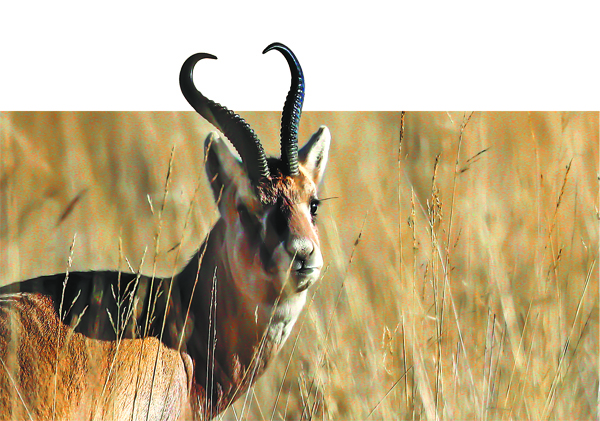Conservation lifts delicate ecosystem


Vulnerable species receive expansive protection, Li Yingxue reports in Hainan Tibetan autonomous prefecture, Qinghai.
Beginning in July, Qinghai Lake bursts to life with spectacular fashion — tens of thousands of scaleless carp (Gymnocypris przewalskii) known as luo li churn the river's surface as they muscle upstream, their sleek, silver bodies flashing like coins in the sun.
The air comes alive with splashes of water and the faint scent of lake water as these resilient fish leap against the current, transforming tranquil streams into glittering "silver rivers".
This species, classified as vulnerable on the China Species Red List, saw its population sharply decline in the 1960s and '70s due to overfishing and environmental degradation. But, thanks to years of relentless conservation efforts in Qinghai province, the population has rebounded to more than 120,000 tons.
Each summer, the breathtaking scene of the scaleless carp migration returns to Qinghai Lake. The fish's revival not only sustains the lake's delicate aquatic balance that also ripples outward, supporting the rich web of life that depends on its waters.
"The scaleless carp constitutes over 90 percent of the lake's total fish population and serves as the primary prey for birds like brown-headed gulls. This species plays a vital role in maintaining the ecosystem and biodiversity of the Qinghai Lake Basin," says Wang Shuning with the protection and utilization administration of the Qinghai Lake Scenic Area.
The fish are not alone in their resurgence. Across Qinghai's vast grasslands and rugged mountains, other iconic species — Tibetan antelope, snow leopards and Przewalski's gazelles — have also seen their numbers climb. Together, they signal the province's growing success in restoring a fragile high-altitude ecosystem once pushed to the brink.
Qinghai province has adopted a holistic approach to the protection and systematic governance of the interconnected ecosystem of "water, grass, fish, birds and animals" in the Qinghai Lake Basin.
"Qinghai's complex terrain and diverse landscapes of high mountains and glaciers have nurtured an abundance of species, making it one of the most concentrated areas for biodiversity, genetic diversity, and species diversity in high-altitude regions worldwide," says Hou Hongbo, director of the Qinghai Provincial Department of Ecology and Environment.
Today, Qinghai is home to 665 terrestrial wildlife species, 532 wild bird species, 52 fish species, and thousands of native plants and fungi — numbers that reflect decades of determined conservation.
"We remain committed to prioritizing ecological protection, continuously strengthening biodiversity conservation, and integrating the concept of a harmonious coexistence between humans and nature into everyday life."
To safeguard biodiversity, Qinghai enacted laws and regulations covering forests, grasslands, wetlands, wildlife and pest management in recent years. Measures include banning fishing in the Qinghai sections of the Yangtze and Yellow rivers, enforcing closed seasons and fishing moratoriums in Qinghai Lake, and implementing grassland protection initiatives such as grazing bans, rest-rotation grazing, and seasonal grazing systems.




































